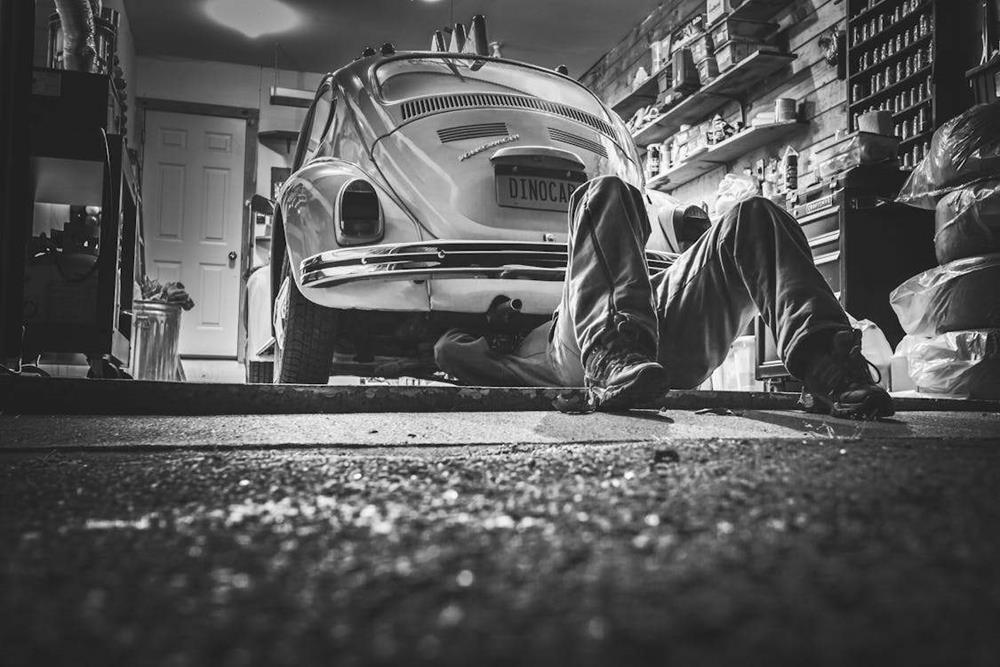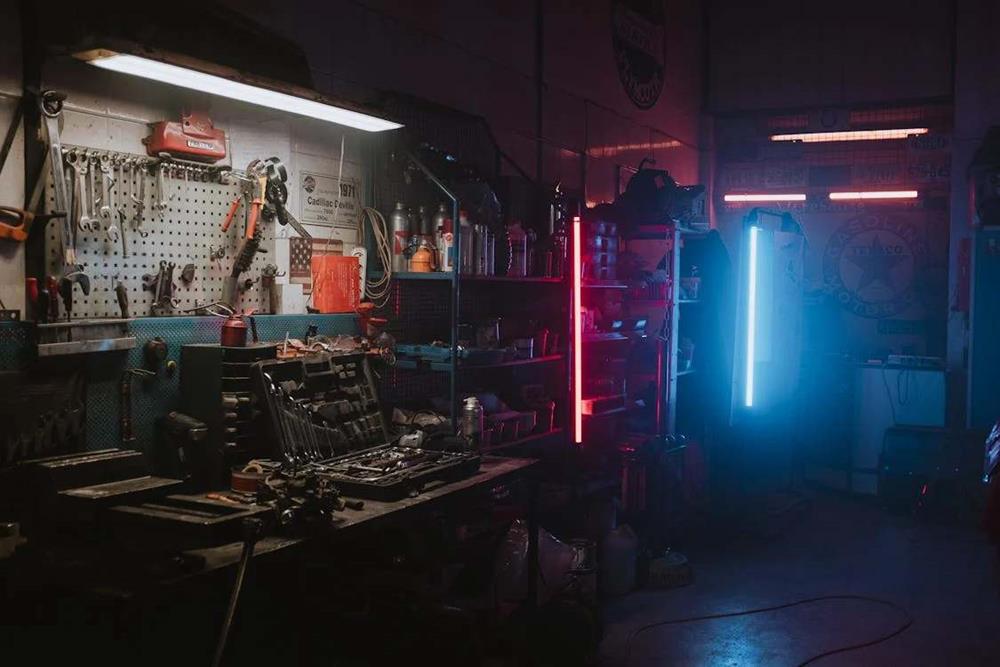Tracing the history of garages is like unfolding the story of automotive progress and our changing lifestyle preferences. Initially conceived as simple shelters for the first automobiles, garages have evolved into essential components of the modern home, reflecting advances in design, technology, and culture.
The transformation of the garage from basic carriage houses to today’s multifaceted spaces offers a fascinating glimpse into how our living spaces adapt to accommodate new inventions and societal shifts. As we delve into the history of garages, we uncover not just the development of a building type but also a narrative of innovation, convenience, and the ever-growing relationship between humans and their vehicles.
The Predecessor of the Garage: Outbuildings
The garage, as we know it today, has its roots in the early outbuildings of the past. Initially designed as carriage houses, these structures were separate from the main home and served as shelters for horse-drawn carriages. With the advent of the automobile in the late 19th and early 20th centuries, these outbuildings underwent a transformation to accommodate the new form of transportation. The transition from carriage house to garage marked a significant shift in architectural design and function.
These early garages were basic, often lacking in amenities we take for granted today, such as electricity or proper ventilation. However, they were pivotal in the evolution of residential architecture, reflecting society’s growing reliance on automobiles. As cars became more accessible to the average family, the garage became an essential feature of home design, evolving from a simple outbuilding to an integral part of the household’s structure.
The Earliest Garages
The earliest garages emerged at the turn of the 20th century, coinciding with the rise of the automobile industry. Before cars became widespread, these spaces were known as carriage houses, serving as storage for horse-drawn carriages and related equipment. However, with the invention of the automobile by Karl Benz in 1886 and the subsequent mass production of cars by Henry Ford in the 1910s, the need for a new kind of storage space became evident.
The first public parking garage for motor vehicles appeared in 1905 in Paris, France, called “Le Garage,” signifying a shift in how people thought about transportation and storage. In the United States, the concept of a garage began to take shape more clearly during the 1920s, as the number of car owners surged.
Garages in the 20th Century
Throughout the 20th century, garages underwent significant transformations, reflecting changes in lifestyle, technology, and car ownership. The post-World War II era, especially, marked a period of rapid suburban expansion, with the garage becoming a standard feature of the American dream home. By the 1950s, attached garages had become more common, symbolizing the increasing importance of the automobile in American life. This shift also mirrored the growing emphasis on convenience and the desire for direct entry from the car into the home.
The latter half of the 20th century saw further innovations in garage design and use. The introduction of automatic garage door openers in the late 1920s by C.G. Johnson revolutionized how garages were used, enhancing ease of access and security. However, it wasn’t until after World War II that these devices became widespread. The 1970s and 1980s witnessed a surge in the popularity of two-car garages, reflecting the growing trend of multiple-car households.
Moreover, garages began to serve multiple purposes beyond storing vehicles. They became spaces for storage, workshops, hobby areas, and even home offices. This evolution mirrored the broader societal trends towards maximizing space and utility in residential properties.
The Creation of the Garage Door
The history of garage doors is closely tied to the rise of the automobile in the early 20th century. Initially, cars were stored in carriage houses, which were not specifically designed for motor vehicles. This changed with the introduction of the dedicated garage and its essential component, the garage door.
The first overhead garage door was invented by C.G. Johnson in 1921. This door was a major improvement over the traditional swing-out style, as it saved space and was much easier to operate. Johnson’s design allowed the door to be lifted upwards and stored parallel to the garage ceiling, revolutionizing how garages were used and accessed.
Following this innovation, in 1926, Johnson went on to invent the first electric garage door opener. This invention brought a new level of convenience, allowing homeowners to open their garage doors with the push of a button, without having to leave their car. However, it wasn’t until after World War II that the electric garage door opener became more common in American homes, as the economic boom led to increased homeownership and the proliferation of personal automobiles.
Garages in the 21st Century
In the 21st century, garages have continued to evolve, reflecting changes in technology, lifestyle, and environmental consciousness. The advent of electric vehicles has seen garages transforming into personal charging stations, with many homeowners installing electric vehicle (EV) charging ports in their garages. This development is closely tied to the increasing popularity of electric cars, spurred by growing environmental concerns and advancements in battery technology.
Furthermore, the rise of the gig economy and remote work has repurposed many garages into home offices, studios, or workshops, showcasing their versatility beyond vehicle storage. Startups like Google and Amazon, which famously began in garages, highlight this space’s potential for innovation and entrepreneurship. Additionally, the concept of smart homes has extended to garages, with automated doors, security systems, and even temperature control becoming standard features.
The early 2000s also saw a trend toward garage organization and customization, with homeowners investing in cabinetry, flooring, and lighting to create more functional and aesthetically pleasing spaces. This era marked a change from viewing the garage as a mere storage area to recognizing its potential as a valuable extension of the home.
As we move further into the 21st century, the role of the garage continues to adapt, mirroring broader societal shifts. From charging stations for the next generation of vehicles to multifunctional spaces catering to work, creativity, and leisure, garages remain a dynamic and integral part of modern homes.
What are the Different Types of Garages Today?
Garages have evolved significantly over the years, transitioning from simple outbuildings to integral parts of our homes. Today, they serve not just as shelters for vehicles but also as workshops, storage areas, and even living spaces. The variety of garage types available reflects their multifunctional nature and the diverse needs of homeowners. In this section, we’ll take a closer look at the different types of garages that you might consider for your home.
Attached Garages
Attached garages are perhaps the most common type found in modern homes. They are built as part of the main structure, offering direct access to the house through an interior door. This feature is particularly appreciated in harsh weather conditions, as it provides a seamless transition from car to home without stepping outside. Attached garages offer convenience and security, making them a popular choice among homeowners. They can be designed to match the architectural style of the house, ensuring a cohesive look.
Detached Garages
Detached garages stand alone, separate from the main house. This type of garage is versatile, as it can be placed anywhere on the property where space permits. Detached garages are ideal for homeowners who need extra storage or workspace that’s removed from the house’s living areas. They also offer an added level of privacy and noise isolation, which is beneficial for those who use their garage as a workshop or studio. While they require a bit of a walk to access, they can be customized to a greater extent than attached garages.
Carports
Carports are a minimalist alternative to traditional garages, offering a covered structure without the full enclosure. They are designed to protect vehicles from the elements but do not provide the same level of security as a garage with locking doors. Carports can be attached to the house or detached, depending on the homeowner’s preference and space availability. This option is cost-effective and quicker to construct, making it a suitable choice for budget-conscious homeowners or those who prefer a more open storage solution.
Drive-Under Garages
Drive-under garages are commonly found in homes built on sloped lots. They are integrated into the house structure, with the garage located on a lower level beneath the living spaces. This design maximizes the use of space on challenging terrains and offers a unique aesthetic appeal. Drive-under garages can be a practical solution for homeowners looking to combine the convenience of an attached garage with the efficient use of their property’s topography.
Multi-Car Garages
Multi-car garages are designed to accommodate more than one vehicle, making them an excellent choice for families with multiple drivers or car enthusiasts with a collection of vehicles. These garages can be either attached or detached and are often larger in size to provide ample space for cars, storage, and sometimes even a workshop area. The additional space can also be utilized for recreational activities or as a home gym, offering flexibility beyond just vehicle storage.
Interesting Facts About Garages
There are numerous fascinating tidbits about garages that most people don’t really know about. Here are ten fascinating facts about garages that might surprise you:
- Origin of “Garage”: The term “garage” comes from the French word “garer,” meaning to shelter or protect. Initially, garages were designed to protect cars, much like how stables protected horses.
- First Garage: The first public parking garage in the U.S. was built in 1898 in Boston. It was a multi-story building specifically designed for storing automobiles.
- Garage Bands: The term “garage band” originated in the 1960s, referring to bands that rehearsed in the family garage. Famous groups like The Beatles and Nirvana started as garage bands.
- Largest Garage: The world’s largest parking garage is the West Edmonton Mall in Alberta, Canada, which can accommodate over 20,000 vehicles.
- Innovations in Garage Doors: The first overhead garage door was invented in 1921 by C.G. Johnson, revolutionizing how garage doors were operated.
- Electric Garage Door Openers: Following the overhead door, the electric garage door opener was introduced by C.G. Johnson in 1926, adding convenience to opening and closing garage doors.
- Garages and Home Value: A well-maintained garage can increase a home’s value by up to 13%, according to real estate experts.
- The Transition to Living Spaces: Many homeowners convert their garages into living spaces, offices, or gyms, reflecting the versatility and potential of this area.
- Garage Sales: The concept of garage sales, where households sell unwanted items, originated in the early 20th century, turning garages into temporary marketplaces.
- Smart Garages: Modern garages are becoming “smart,” with Wi-Fi-connected garage door openers, security cameras, and systems that can be controlled via smartphone apps.
Conclusion
From sheltering the first automobiles to accommodating the electric cars of today, garages have continually adapted to meet the needs of their times. As we look to the future, the garage’s role is set to evolve further, reflecting ongoing advancements in technology and shifts in how we live and work. This unassuming part of our homes, often overlooked, holds a rich history and a promising future.



